College Namesake
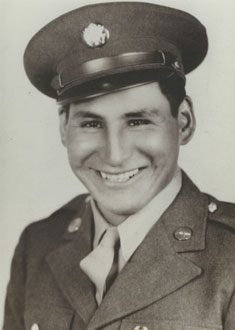
Cankdeska Cikana Community College was named in honor of Paul Yankton Sr. whose Dakota name was Cankdeska Cikana. Paul Yankton Sr. was a recipient of two Purple Hearts and died on November 29, 1944, while serving as a rifleman with the United States Army’s 11th Infantry at Lorraine, France.
Cankdeska Cikana was a proud warrior who believed in self-responsibility and the need for educational opportunities for Indian people. In May 1995 the Board of Regents officially changed the name of the institution to Cankdeska Cikana Community College. Mr. Yankton’s son, Paul Jr., has a lifetime appointment as Chairman of the Board of Regents.
Cankdeska Cikana translates into English as Little Hoop and is pronounced “Chauñ-GDEH-sh’kah CHEE-kah-nah”.
PAUL YANKTON'S HONOR SONG
Ina cante sica unsni wo.
Mother do not be sadHe wimaca eca okicize wanbdake kta.
I am a man so I will see the war.He Cankdeska Cikana heye ka maka mahed iwanka.
That is what Little Hoop said and laid down into the earth.
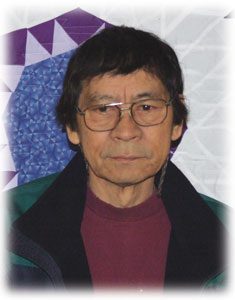
Paul Yankton, Jr. was the Chairman, CCCC Board of Regents and was an education leader for the Spirit Lake Dakota Tribe and it’s tribal college for over 32 years. He had vision and dedicated his life to creating an education system that works for the Spirit Lake Dakota people. Paul, Jr. passed away on February 5, 2014.
Cankdeska Cikana Community College History
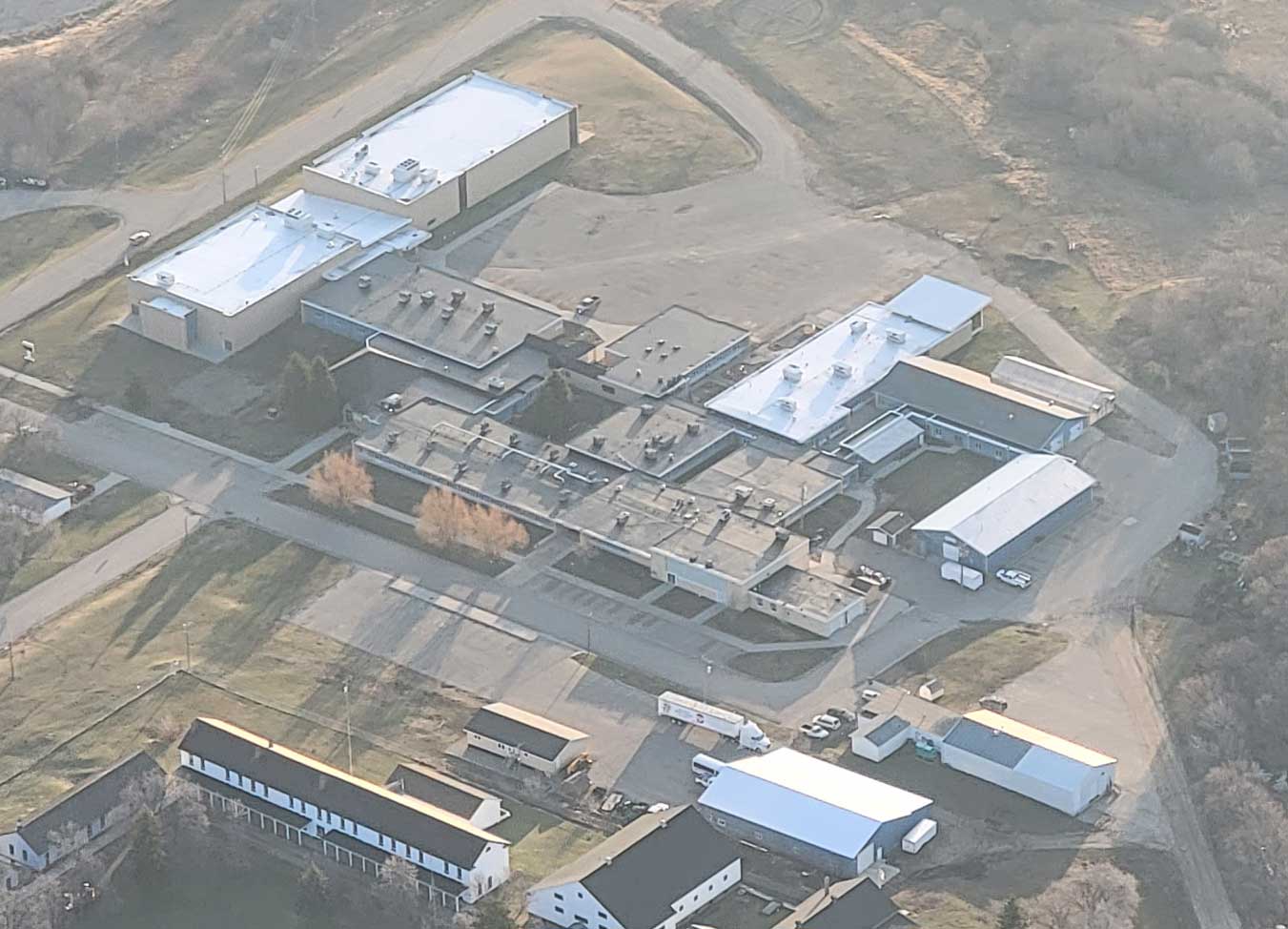
In the early 1960s Chief Lewis Good House (tribal chairman) was adamant that any services for the people of the Spirit Lake Tribe (then called the Devils Lake Sioux Tribe), were to be based in the villages where the Dakota people lived and raised families, south of Devils Lake. Lake Region Junior College (now Lake Region State College) reached out to Chairman Good House to provide college courses on the reservation. The History of the Plains Indians was the first course listed in the LRJC catalog in 1965-66 and in June 1967, with the Chairman’s support, LRJC received a major grant from the National Endowment for the Humanities to develop a college program for Spirit Lake. This collaboration led to the establishment of a tribal education committee in the 1970s to continue working with LRJC for grant funding for a higher education program for the Spirit Lake community.
In November 1970 a significant conference on Indian post-secondary education was held in Devils Lake, North Dakota by the American Association of Junior Colleges and funded by the Kellogg Foundation. Educators and tribal leaders from eleven reservations and nine Midwest junior colleges discussed the potential for establishing tribal colleges. This conference played a significant role in the future development of the American Indian Higher Education Consortium (AIHEC).
LRJC entered into a bilateral agreement with the Spirit Lake Tribe in 1974 to provide college classes and to assist in establishing a college on the reservation. Little Hoop College obtained US Department of Education, Title III Developing Institutions grant funding that was used for staffing with the first classes offered in January 1975 and as LRJC courses. A feasibility study was done by the Bureau of Indian Affairs (BIA) in 1980 to determine eligibility of Little Hoop Community College for funding under PL 95-471, the Tribally Controlled Community College Assistance Act. Little Hoop Community College (LHCC) began receiving funds in September 1980.
In 1982, Little Hoop Community College was accepted as a candidate for accreditation status by North Central Association of Colleges and Schools (NCACS – now called the Higher Learning Commission or HLC) and thus the bilateral agreement with LRJC was terminated. In 1984 LHCC moved into its existing campus building and legally changed the name to Cankdeska Cikana (means Little Hoop) Community College (CCCC). CCCC was accredited by the NCACS in February 1990 at the associate level.
CCCC continues to provide post-secondary higher education opportunities for the Spirit Lake Dakota reservation community in northeastern North Dakota as an accredited, public, non-profit institution. Goals for the future include achieving accreditation for a bachelor’s program – preferable for the Dakota Studies Program; campus expansion to build tiny houses for students and community members as part of the academic programming and to address the community economic needs; the development of tribal members for faculty positions; and the establishment of theater/drama/music programming.
College Logo
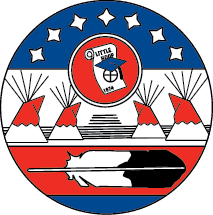
The Cankdeska Cikana (Little Hoop) is represented by the inner white circle. Within the circle/hoop, a diploma and mortar board represents the educational opportunity that the college has to offer the Spirit Lake Tribe community. The diploma shows the date that the college was established. The medicine wheel on the diploma represents the balance we strive for in our lives – mental, physical, emotional, and spiritual.
The inner red circle represents “Anpetu Wi” (the sun), with each new red dawn, we gain wisdom, knowledge, and understanding.
The upper blue semi-circle represents “Wakan Tanka” (God) who is ever present and watches over and protects us.
The seven stars symbolize the seven campfires and the seven rites and values of the Dakota Nation.
The four tipis represent the four districts that Cankdeska Cikana Community College serves on the Spirit Lake Tribe reservation.
The six visible poles in each tipi reflect the six directions.
In the background, the hill represents ‘’Ina Maka” (mother earth) also “Cante Paha” (Heart Butte) which is our “Hocoka” (center).
The eagle feather represents “Wambdi Gdeska” (spotted eagle) who flies the highest so he is our messenger to God. The feather also represents the Black Road which is the path of our daily life hardships and that we must stay focused on our educational goals and follow the feather’s quill to the end (achievement).
The red band behind the feather is the Red Road that symbolizes the spiritual path our ancestors followed throughout their lives to assure their place in the spirit world.
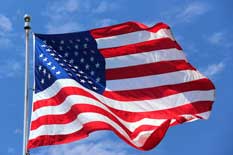
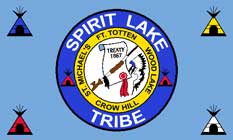
Spirit Lake Tribal Flag Song
By Louis Garcia, Spirit Lake Tribe Historian
The origin of the Spirit Lake Tribal Flag song began in 1946 when the singers of the Hay Boys (Pezihoksina) club gathered. Michael Jackson the lead Singer composed the words and wished to use the melody belonging to Chief Left Hand Bear’s (Mato Catka) honor song. The Hay Boys Club officially asked the Leftbear family permission to use the tune of Chief Leftbear’s honor song. They traditionally feasted the Leftbear family, who granted permission to use the tune.
SPIRIT LAKE TRIBAL FLAG SONG
Hay Makawita kin he (the Country)
Hay Tawiyokihena Kinhan waṡtewadaka ca (I love the Flag)
Wahacanka waye kin ohinniyan (Always using it as a shield)
Miwakam kabogbog najin yedo (it stands flapping above me)
The Flag of the United States I love, so I will always use it as a shield, standing flying above me.
Mr. Jackson was a well-known singer for pow-wow and Catholic Church hymns. He composed many songs, all of which were pleasing to the ear.
The flag song is the Dakota way of honoring veterans and is used in place of the national Anthem. The pow-wow committee would select a family for each day of the celebration to use their love one’s flag. The veteran’s flag was raised on a flag pole early each morning and taken down each evening. The Flag Song was rendered for this occasion.
The use of the flag of the United States show the people’s patriotism and to honor veterans, and to show everyone present were at peace with each other. When the flag song was sung four times, the singers immediately sang a Iwakcipi (Round Dance) song which was danced by the War Mothers. At the completion of the four verses, the family of the veteran held a Giveaway to thank the people for the honor of using their love one’s flag.
One must remember that this is the way the Flag Song was used before the Grand Entry was introduced to the Fort Totten Days celebration in 1967. Spirit Lake was the first who introduced the Grand Entry to the modern pow-wow. Harry Hopkins Senior saw how during a rodeo the participants would ride into the arena carrying the United States Flag. From here the Grand Entry spread all over the pow-wow world.
The above information was obtained from John Leftbear, grandson of the chief, Harry Hopkins Senior, and Ephraim Hill, two of the Hay Boys singers, and Duane Jackson, great grandson of the composer.
If anyone has additional information please come forward so the correct history can be kept by the Spirit Lake people.

